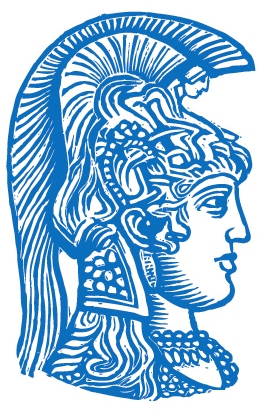 National and Kapodistrian University of Athens
Department of Biology
Biophysics & Bioinformatics Laboratory
National and Kapodistrian University of Athens
Department of Biology
Biophysics & Bioinformatics Laboratory
Protein Information |
|
|---|---|
| Protein Name | Potassium voltage-gated channel subfamily H member 1 |
| Accession Code | O95259 |
| Gene | KCNH1 |
| Organism | Homo sapiens | Human (Taxonomy: 9606) |
| Part of Reference Proteome? | Yes |
| Sequence (Length: 989) |
Structure Viewer (PDB: 5J7E) |
|---|
Description |
Position in the Nuclear Envelope |
|
|---|---|---|
| Location | Location ID | Description |
| Nuclear Envelope | SL-0178 | The nuclear envelope is a membrane system which surrounds the nucleoplasm of eukaryotic cells. It is composed of the nuclear lamina, nuclear pore complexes and two nuclear membranes. The space between the two membranes is called the nuclear intermembrane space. |
| Nuclear Inner Membrane | SL-0179 | The inner membrane of the nucleus is the membrane which separates the nuclear matrix from the intermembrane space. In mammals, the inner nuclear membrane is associated with heterochromatin and the nuclear lamina. |
| Nuclear Membrane | SL-0182 | The membrane surrounding the nucleus. This term is used when it is not known if the protein is found in or associated with the inner or outer nuclear membrane. | Membrane Topology |
| Topology | Source | Annotation Type |
| Transmembrane | UniProt | By Similarity {ECO:0000250|UniProtKB:Q63472} | Assigned Ontology terms |
Description |
|
|---|---|
| Pore-forming (alpha) subunit of a voltage-gated delayed rectifier potassium channel (PubMed:9738473, PubMed:11943152, PubMed:10880439, PubMed:22732247, PubMed:25556795, PubMed:27325704, PubMed:27005320, PubMed:27618660). Channel properties are modulated by subunit assembly (PubMed:11943152). Mediates IK(NI) current in myoblasts (PubMed:9738473). Involved in the regulation of cell proliferation and differentiation, in particular adipogenic and osteogenic differentiation in bone marrow-derived mesenchymal stem cells (MSCs) (PubMed:23881642). {Experimental EvidencePubMed:10880439, Experimental EvidencePubMed:11943152, Experimental EvidencePubMed:22732247, Experimental EvidencePubMed:23881642, Experimental EvidencePubMed:25556795, Experimental EvidencePubMed:27005320, Experimental EvidencePubMed:27325704, Experimental EvidencePubMed:27618660, Experimental EvidencePubMed:9738473}. | Assigned Ontology terms |
Description |
|
|---|---|
| Temple-Baraitser syndrome (TMBTS) [MIM:611816]: A developmental disorder characterized by intellectual disability, epilepsy, hypoplasia or aplasia of the thumb and great toe nails, and broadening and/or elongation of the thumbs and halluces, which have a tubular aspect. Some patients show facial dysmorphism. {Experimental EvidencePubMed:25420144}. Note=The disease is caused by variants affecting the gene represented in this entry. Zimmermann-Laband syndrome 1 (ZLS1) [MIM:135500]: A form of Zimmermann-Laband syndrome, a rare developmental disorder characterized by facial dysmorphism with bulbous nose and thick floppy ears, gingival enlargement, hypoplasia or aplasia of terminal phalanges and nails, hypertrichosis, joint hyperextensibility, and hepatosplenomegaly. Some patients manifest intellectual disability with or without epilepsy. ZLS1 inheritance is autosomal dominant. {Experimental EvidencePubMed:25915598}. Note=The disease is caused by variants affecting the gene represented in this entry. | Database Associations |
| OMIM | 135500 603305 611816 |
| DisGeNET | 3756 |
Interactions with Nuclear Envelope proteins (1 interactors) |
|||
|---|---|---|---|
Interactions with other proteins (10 interactors) |
|||
Database | Links |
| UNIPROT | O95259 B1AQ26 O76035 Q14CL3 |
| PDB | 5J7E |
| Pfam | PF00027 PF00520 PF13426 |
| PROSITE | PS50042 PS50113 PS50112 |
| OMIM | 135500 603305 611816 |
| DisGeNET | 3756 |